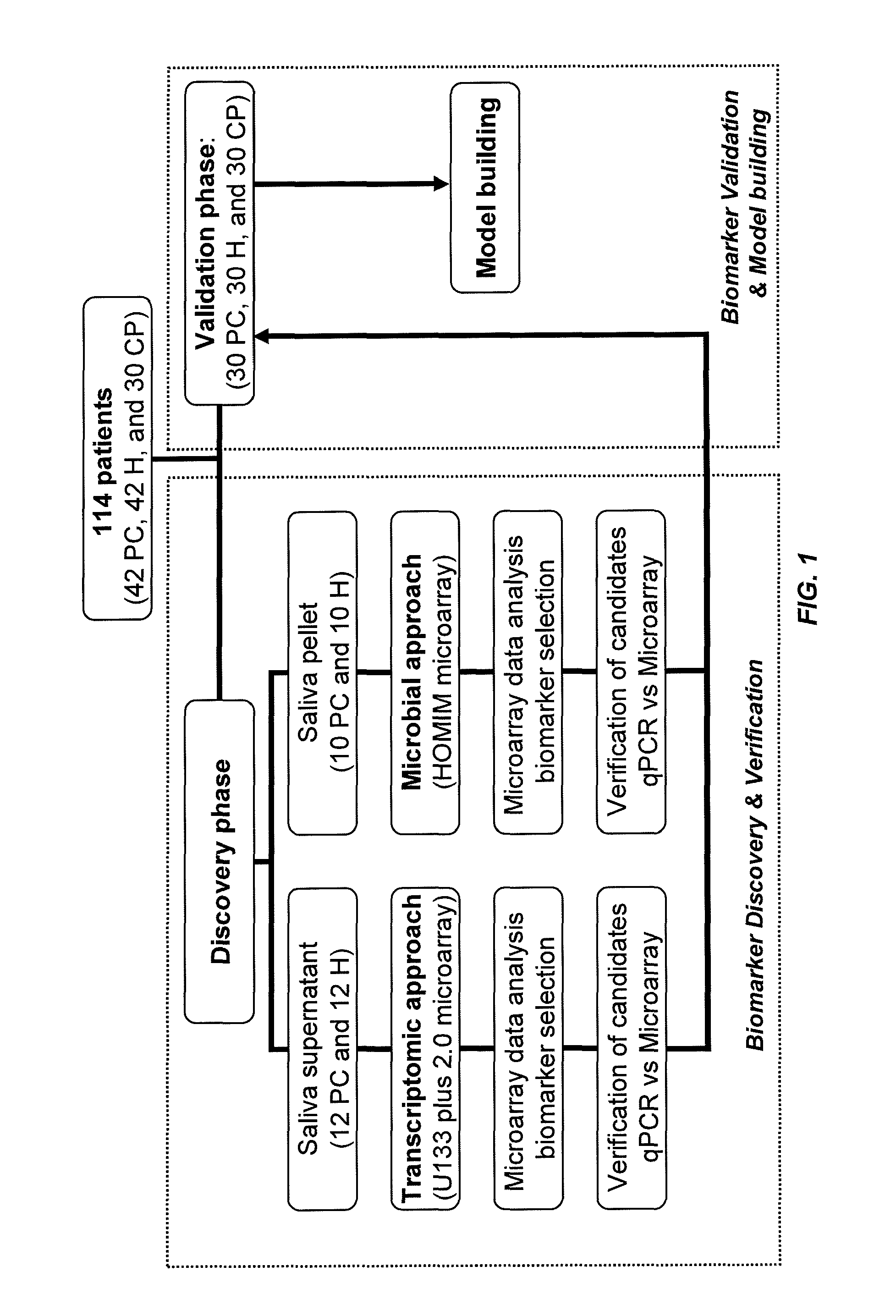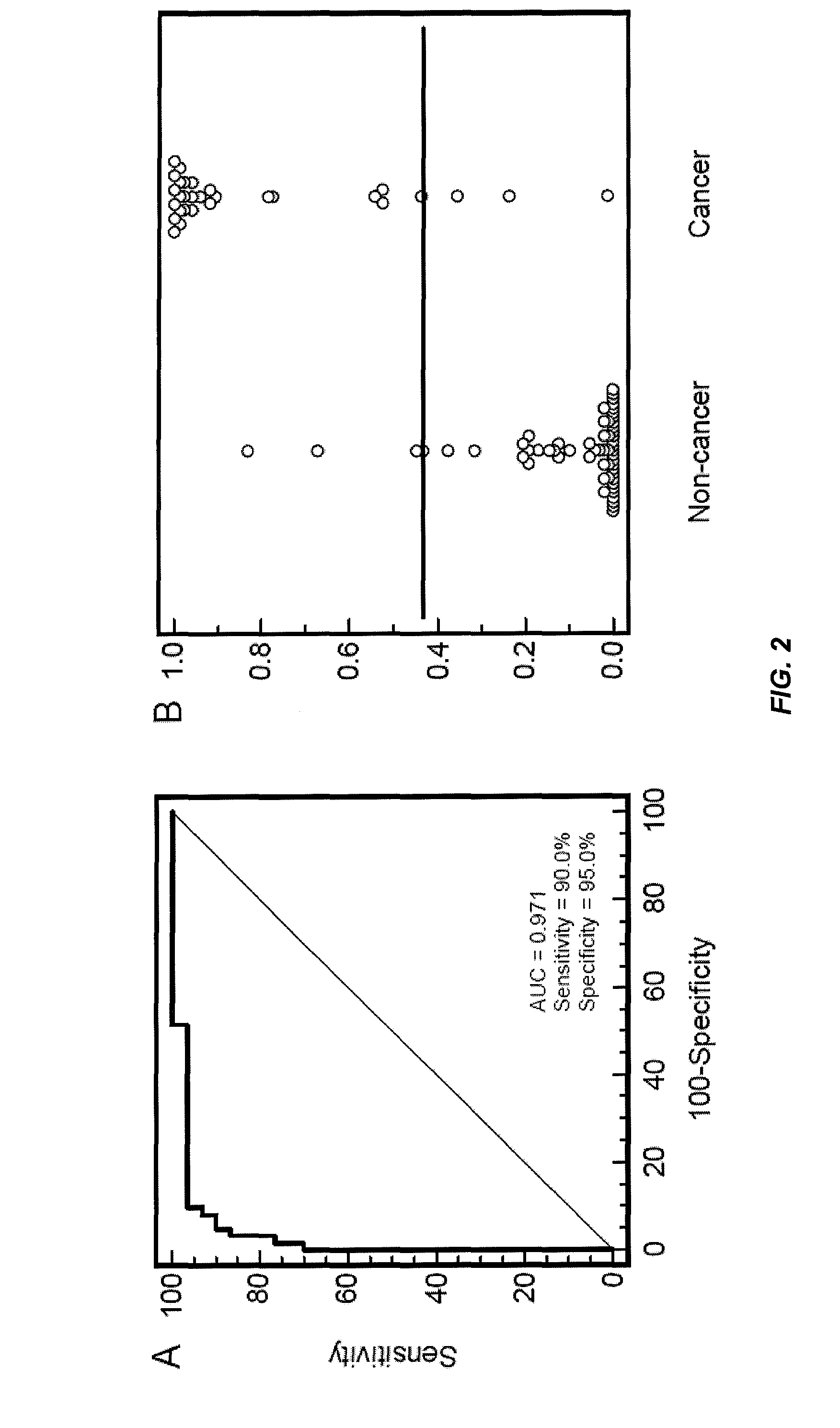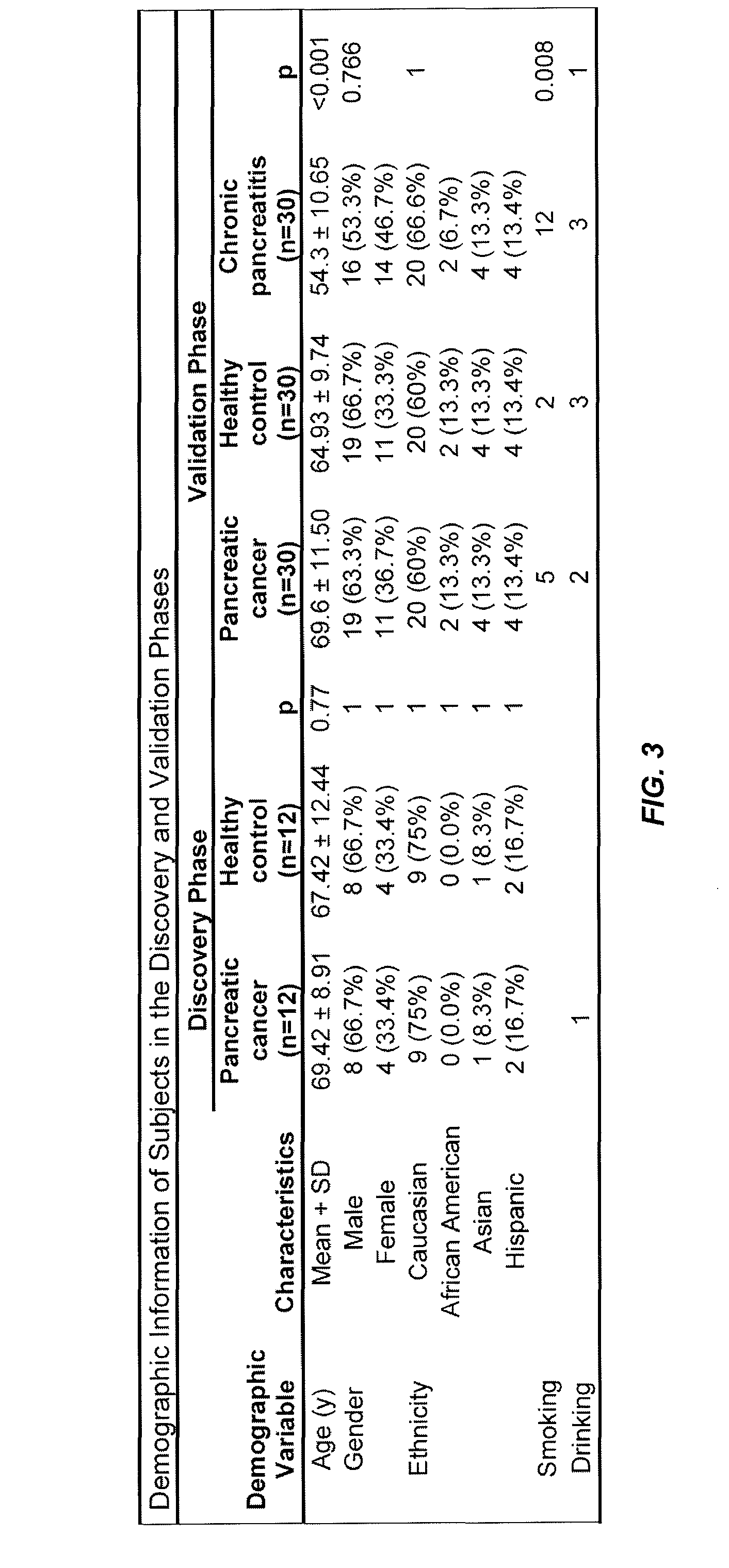Salivary transcriptomic and microbial biomarkers for pancreatic cancer
a transcriptomic and microbial technology, applied in the field of salivary transcriptomic and microbial biomarkers for pancreatic cancer, can solve the problems of poor overall prognosis of the disease, less than 4% of all patients survive longer than 5 years, and the treatment options available to most pancreatic cancer patients are more limited than
- Summary
- Abstract
- Description
- Claims
- Application Information
AI Technical Summary
Benefits of technology
Problems solved by technology
Method used
Image
Examples
Embodiment Construction
I. Introduction
[0026]The present invention relates to the discovery of novel nucleic acid and microbial pancreatic cancer biomarkers in saliva and novel methods of using such biomarkers for diagnosing pancreatic cancer. The present invention also provides kits useful in the practice of the methods of the invention.
[0027]Pancreatic cancer generally has a poor prognosis, with a five-year life expectancy of less than about 4%, due in part to the late onset of symptoms of pancreatic cancer, frequently after the cancer has metastasized or become surgically unresectable. Therefore, methods of diagnosing pancreatic cancer at an early stage, prior to the point in which the cancer has metastasized or become surgically unresectable, would likely lead to improved outcomes and higher life expectancy rates for individuals having pancreatic cancer. However, the methods of diagnosing pancreatic cancer should be specific enough to distinguish between pancreatic cancer and chronic pancreatitis, a ch...
PUM
| Property | Measurement | Unit |
|---|---|---|
| Tm | aaaaa | aaaaa |
| temperatures | aaaaa | aaaaa |
| temperatures | aaaaa | aaaaa |
Abstract
Description
Claims
Application Information
 Login to View More
Login to View More - R&D
- Intellectual Property
- Life Sciences
- Materials
- Tech Scout
- Unparalleled Data Quality
- Higher Quality Content
- 60% Fewer Hallucinations
Browse by: Latest US Patents, China's latest patents, Technical Efficacy Thesaurus, Application Domain, Technology Topic, Popular Technical Reports.
© 2025 PatSnap. All rights reserved.Legal|Privacy policy|Modern Slavery Act Transparency Statement|Sitemap|About US| Contact US: help@patsnap.com



